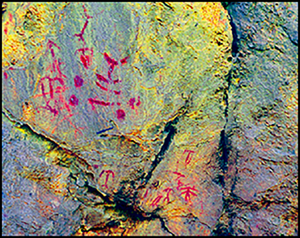Article contents
Who painted that? The authorship of Schematic rock art at the Los Machos rockshelter in southern Iberia
Published online by Cambridge University Press: 01 September 2020
Abstract

Globally, rock art is one of the most widely distributed manifestations of past human activity. Previous research, however, has tended to focus on the art rather than artists. Understanding which members of society participated in creating such art is crucial to interpreting its social implications and that of the sites at which it is found. This article presents the first application of a method—palaeodermatoglyphics—for the estimation of the sex and age of two later prehistoric individuals who left their fingerprints at the Los Machos rockshelter in southern Iberia. The method has the potential to illuminate the complex socio-cultural dimensions of rock art sites worldwide.
- Type
- Research Article
- Information
- Copyright
- Copyright © Antiquity Publications Ltd, 2020
References
- 7
- Cited by




